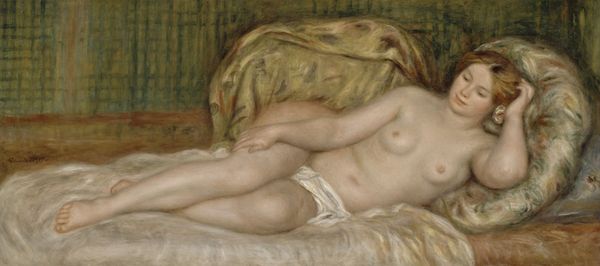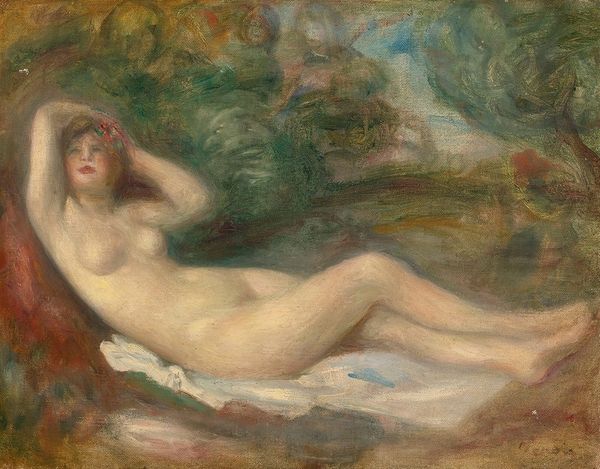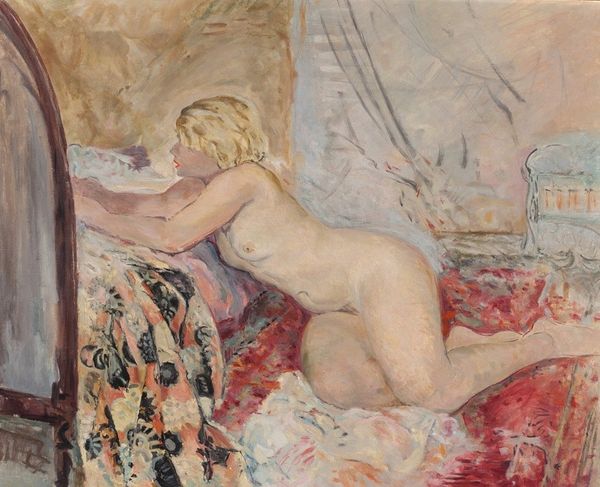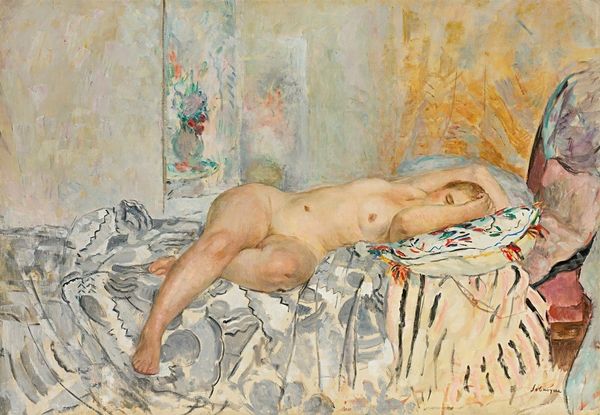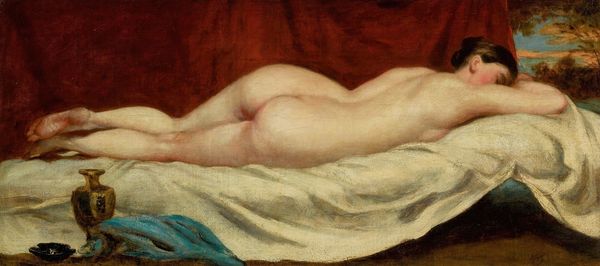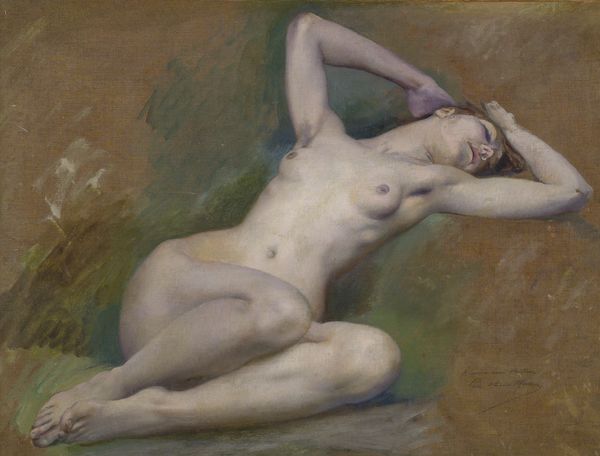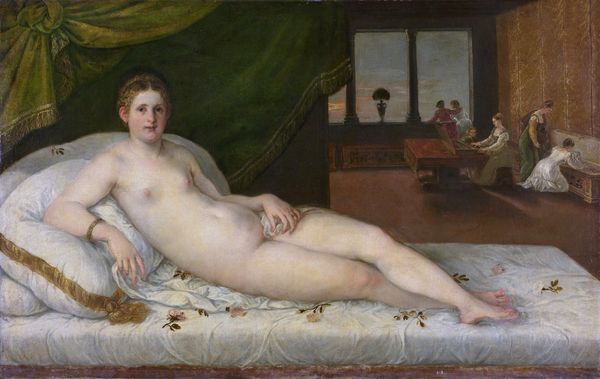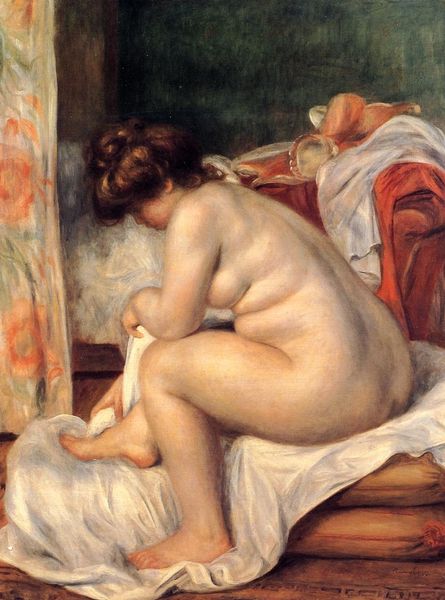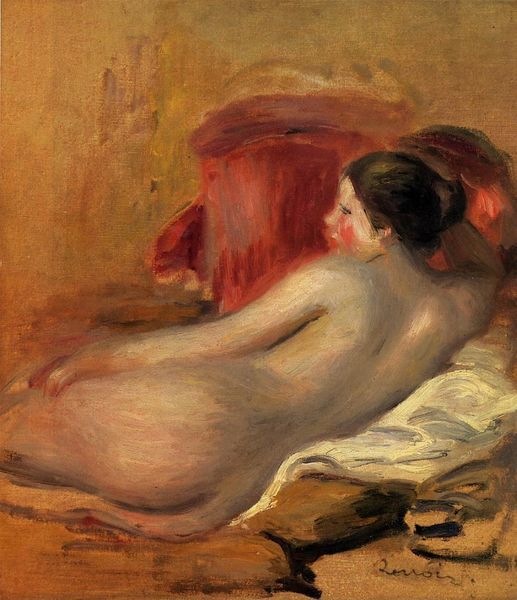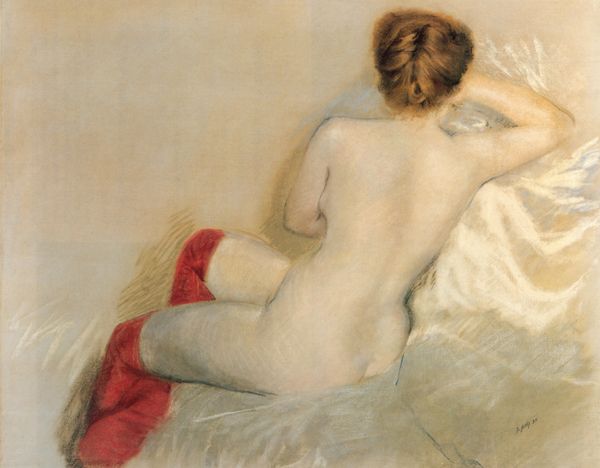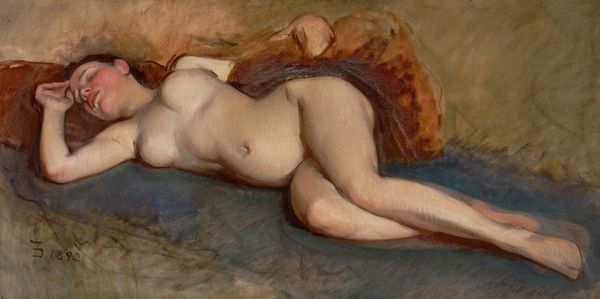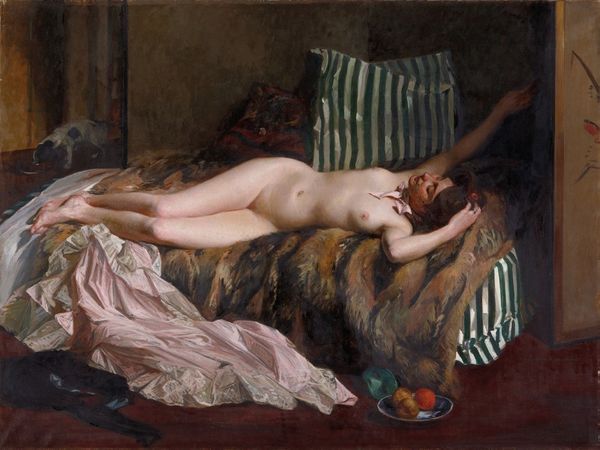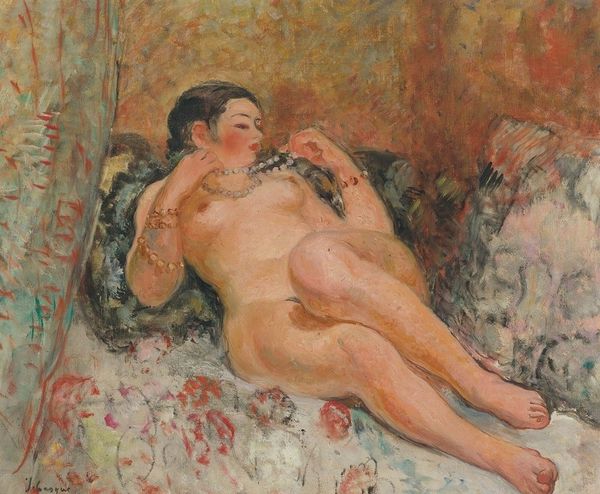
Copyright: Public Domain: Artvee
Editor: This is Pierre-Auguste Renoir's "Femme nue couchée," an oil painting from around 1892. It's quite intimate, almost voyeuristic. What strikes me is the way he renders the female form. What do you see in this piece? Curator: The male gaze is undeniable, isn’t it? But let's consider what it might tell us about 19th-century societal norms and the representation of women at the time. It reflects a moment steeped in patriarchal structures, yet we also see Renoir’s distinctive impressionistic style softening those very structures through his embrace of light and texture. Do you notice how the loose brushwork seems to almost dissolve the subject into her surroundings? Editor: Yes, it's like she's melting into the background! So, you're saying the technique is as important as the subject? Curator: Precisely. The brushstrokes invite us to consider the painting’s own construction and materiality. Where does the individual end, and the societal representation begin? Consider, too, that art by women during this period was not given equal attention; do you feel it's relevant to look through such painting in light of second wave feminism in order to reveal assumptions of gender? Editor: I see what you mean. We have to think about whose perspectives were valued and whose were silenced back then. So looking at the technical skills combined with this representation and with broader power dynamics starts to complicate the conversation and opens many directions for future thought. Curator: Exactly. And perhaps recognizing that discomfort is a necessary step towards a more equitable understanding of art history and the images that shape our world today. Editor: This painting has a lot to unpack. I appreciate how you pushed me to think beyond the surface, so to speak. Thanks!
Comments
No comments
Be the first to comment and join the conversation on the ultimate creative platform.
